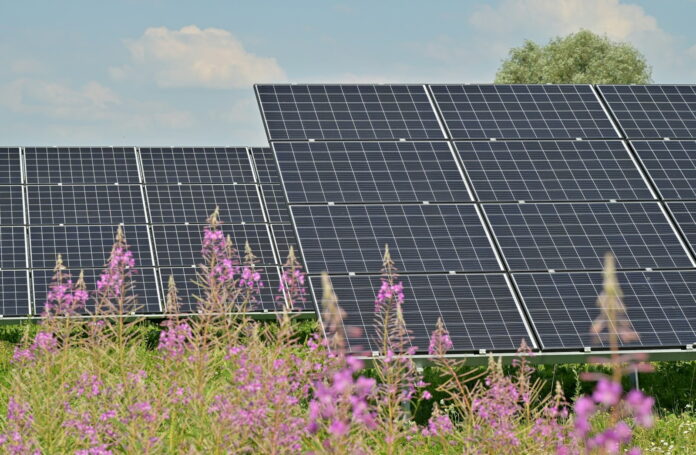In recent years, there has been a growing shift towards renewable energy sources worldwide, and small communities are no exception. With the increasing urgency to address climate change, more small towns are taking bold steps to transition to 100% renewable energy. This movement not only reflects a commitment to environmental sustainability but also positions these communities as leaders in the emerging green economy.
Embracing Renewables: Small Town Pioneers
Small communities across the globe are setting ambitious targets to power their towns entirely with renewable energy. Take, for example, the town of Varese Ligure in Italy, which has become a beacon of sustainability by harnessing hydropower and solar energy to meet all its electricity needs. Similarly, the community of Samso in Denmark has achieved self-sufficiency through a combination of wind turbines, solar panels, and biomass energy. These pioneers are not only reducing their carbon footprint but also inspiring other small towns to follow suit.
The motivation for such communities often stems from the desire to preserve the natural beauty that defines them, as well as securing energy independence and a predictable energy supply. By investing in renewable infrastructure, towns like Greensburg, Kansas, which rebuilt with sustainability in mind after a devastating tornado, have turned adversity into opportunity. The town’s commitment to renewables has spurred innovation and galvanized community support, serving as a model for others.
What sets these small-town pioneers apart is their ability to leverage local resources and community spirit. Whether it’s tapping into geothermal energy in Iceland’s villages or harnessing wind power on the shores of Scotland’s Orkney Islands, these communities demonstrate that with the right vision and determination, transitioning to 100% renewable energy is not only feasible but also beneficial on multiple fronts.
Funding the Transition: Community Models
Financing the shift to renewable energy is often one of the most significant hurdles small communities face. However, innovative community models have emerged to address this challenge. For instance, crowdfunding platforms have enabled towns like Crowell, Texas, to raise capital for solar projects directly from residents who, in return, benefit from lower energy costs and a stake in the project’s success. This has fostered a sense of ownership and engagement among community members.
Another successful model is the establishment of energy cooperatives, where members collectively own and operate renewable energy resources. In Germany, the village of Schönau exemplifies this approach, having crowdfunded the purchase of its electricity grid to prioritize renewable sources. By pooling resources and sharing risks, small towns can overcome financial barriers that might otherwise prevent them from making the transition to green energy.
Grants and subsidies from government entities at various levels also play a critical role in funding the renewable energy transition. The town of Kodiak, Alaska, for instance, capitalized on state grants to construct wind turbines and a hydroelectric dam. Such financial support not only subsidizes the initial investment but also helps to reduce the long-term energy costs for the community, making the projects more economically viable.
Overcoming Barriers: Local Success Stories
Despite the enthusiasm for renewable energy, small towns often face unique challenges, including limited economies of scale, regulatory hurdles, and a lack of technical expertise. However, many communities have successfully navigated these obstacles. For example, Rock Port, Missouri, became the first community in the United States to be fully powered by wind energy, overcoming skepticism by demonstrating the tangible benefits of their wind farms through educational campaigns and public engagement.
In some cases, partnerships with universities and non-profit organizations have provided the necessary technical assistance and knowledge transfer. The town of Güssing in Austria overcame the barrier of technical complexity by collaborating with a local research institute to develop a biomass gasification plant, turning the town into a net energy producer and creating a blueprint for others to follow.
Adapting to local conditions is also crucial. On the Spanish island of El Hierro, the community capitalized on its unique geography to construct a wind-hydro hybrid system that addresses the intermittency of wind by storing surplus energy as pumped hydroelectric energy. This innovative solution ensures a consistent energy supply and stands as a testament to the adaptability and creativity of small towns in the face of renewable energy challenges.
The Impact on Jobs: Green Economy Boon
The shift towards renewable energy is not only an environmental imperative but also an economic one, as it has the potential to create numerous jobs. In small towns, this transition can revitalize local economies by providing employment in the installation and maintenance of renewable energy systems. The town of Pictou Landing in Nova Scotia, Canada, is a prime example, where the adoption of wind energy has created jobs and spurred economic activity in the region.
The renewable energy sector can stimulate the development of new industries and services, including energy efficiency consulting, sustainable construction, and ecotourism. For example, the community of Feldheim, Germany, attracts visitors from around the world interested in learning about its energy-independent status. This not only generates revenue but also positions the town as a leader in sustainable living.
Investment in education and training programs is essential to ensure that the local workforce can capitalize on these new opportunities. Some small towns have established partnerships with technical schools and community colleges to develop curricula focused on renewable energy technologies, ensuring that the benefits of the green economy are fully realized within the community.
As small communities around the world blaze the trail towards a renewable energy future, they provide valuable insights and inspiration for others to embark on similar journeys. By embracing renewable energy, innovatively funding their initiatives, overcoming barriers through determination and ingenuity, and fostering job growth in the green economy, these towns are not only addressing the urgent call for sustainability but also enhancing their local economies and quality of life. Their success stories serve as a testament to the power of community action and the potential of renewable energy to transform small towns into models of environmental stewardship and economic resilience.
